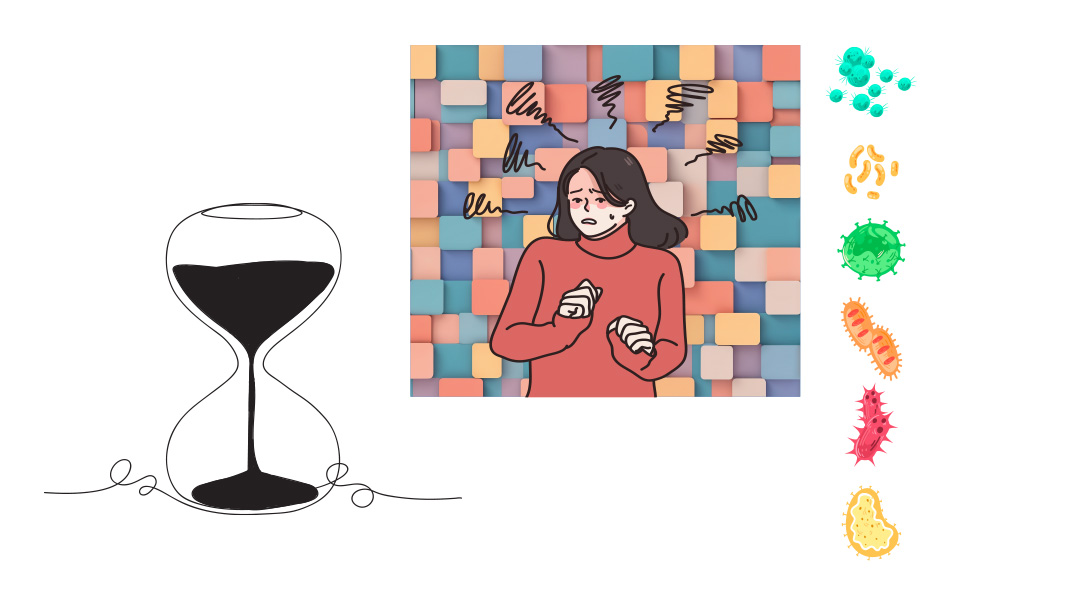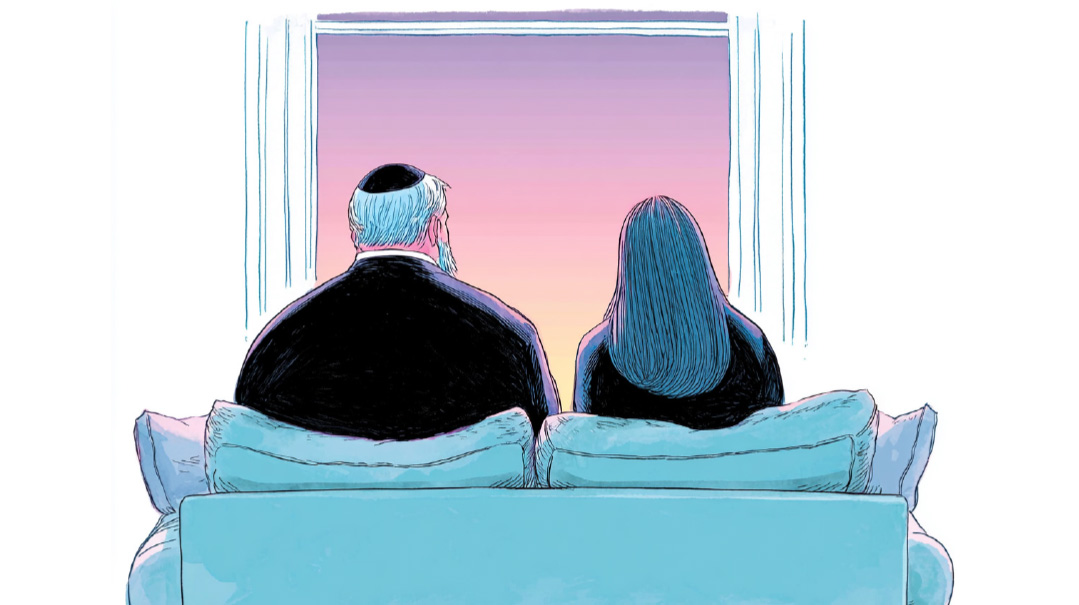A Letter from a Teen
| August 14, 2024Firstly, dear teen, you answered a huge piece of your question by writing

A Letter from a Teen
Sarah Rivkah Kohn
A brave teen wrote me a letter:
I have panic attacks. I actually didn’t know what the feeling was until a friend of mine was describing her own panic attack and I realized, “Ohhhh, so that’s why taking Tylenol for this pain wasn’t helping!”
When I asked my parents if I could go to therapy, they told me I was blowing this out of proportion, and that I was only asking because this friend of mine was in therapy.
My mother said she’d teach me good breathing techniques.
My parents are good parents, but very not into therapy, and so now I’m stuck. No therapist will see me under 18 without consent. Is there no hope for teens like me?
TO be honest, I wished this email had landed in spam. Or in someone else’s inbox.
My heart hurt so much, I wanted to flee.
But here I am.
Firstly, dear teen, you answered a huge piece of your question by writing: When one avenue was shut to you, you looked for another way to find a resource. This skill will help you profoundly, not just in your challenges with anxiety, but in life. Don’t give up just yet. If my ideas aren’t helpful, keep searching till you find a path that is right for you.
Panic attacks aren’t fun. And no, Tylenol doesn’t help!
Part of the challenge with panic attacks is that while they are common, the range can be very vast. The frequency, duration, and strength vary from person to person. One person might say, “They’re not the end of the world,” while another person will say, “When they come, I feel weak for hours.”
For some people, breathing techniques, chomping on ice, or a hot tea can help their panic attacks. Other people may have frequent panic attacks that make it hard to focus, as their brain and body fight this sensation.
Sometimes, we think we’ve explained ourselves and that just using a word like “panic attack” should make the other person get it. Sometimes more clarity is needed. So my suggestion is to sit with one or both of your parents and say: “I’m not sure I explained what I’m feeling. Panic attacks for me look like ______, feel like ______, and when they come I _____.”
Tell them what you need from them: “I would love if you could help me with xyz,” or “call Relief with me” or “can we speak to our rav together?”
But what if that fails?
Try to get an outsider with familial influence to help — a rav, mechaneches, or grandparent. See if a trusted adult can help you with this in a noncombative way. (Don’t get someone your parents are at odds with!)
Let’s say that too fails. There are some good children’s books on anxiety and panic attacks that teach good skills. I rarely recommend adult books to teens because you often have to sift through lots of language or other hashkafically problematic pieces to get to a solid piece of advice. Children’s books, on the other hand, have a lot of excellent material (sometimes wiser!) without the extras. See if you can get some “holdover” ideas.
Whatever you do, don’t give up. Adulthood seems far away, but it’s not as far as you think. If all else fails, when you turn 18 you can get the help you want.
But don’t give up on your parents. Sometimes ideas take time to land well. Keep trying to connect. The most common reason parents resist therapy is shame. They may believe if they were a better parent this wouldn’t have happened (sorry, nope) or that they failed you in some way.
Additionally, many parents worry that if a therapist hears only a teen version of their lives, they will be judged or even cut off. Inviting your parent to be part of the process and perhaps joining you occasionally can sometimes help them understand your struggle and also feel that you’re all on one team.
Next column, I hope to address parents of teens like this.
Sarah Rivkah Kohn is the founder and director of Zisel's Links and Shlomie’s Club, an organization servicing children and teens who lost a parent.
Impetigo
Dr. Jennie Berkovich
W
arm weather, summer camp, a rash, cut, or an insect bite? Sounds like the perfect recipe for impetigo!
This highly contagious infection, usually caused by the staphylococci organisms, enters the skin via a small cut, insect bite, or rash. It typically affects children between two and five years old, but can occur at any age. It usually appears as red sores that quickly burst and ooze, forming a distinctive honey-colored or golden-brown crust. These sores are often itchy and commonly develop around the nose, mouth, and extremities. In some cases, larger fluid-filled blisters may form. These blisters eventually evolve into sores as well. This is usually referred to as bullous impetigo.
The infection spreads easily through direct contact with the sores, or by touching contaminated objects like towels, sheets, or toys. It’s particularly common in warm weather when children are more likely to get cuts and scrapes from outdoor play. Kids with underlying dry skin and eczema are at higher risk for infection as well.
Treatment typically involves antibiotic cream or oral antibiotics, depending on the severity and extent of the infection. For mild cases, topical antibiotics like Mupirocin may be prescribed. More severe cases may require oral antibiotics. While impetigo is usually harmless, complications can occur if left untreated. These may include cellulitis (a deeper skin infection) or other post-infectious complications. In very young children, there’s a small risk of staphylococcal scalded skin syndrome, a more serious condition requiring immediate medical attention.
Common misconceptions about impetigo include thinking it only affects “dirty” children or that it will heal on its own without treatment. Children and families with perfect hygiene can get impetigo, and proper treatment is necessary to prevent spread and complications. To prevent impetigo, encourage regular handwashing, keep cuts and scrapes clean, and avoid sharing personal items.
I always recommend that sores are covered by clothing and well healed over before being around other children. However, I don’t recommend Band-Aids or other adhesives be used to cover individual sores.
Impetigo typically responds nicely to antibiotics and heals without scarring. It is not uncommon for it to “spread” in families and occasionally may require several treatments to completely eradicate.
Dr. Jennie Berkovich is a board-certified pediatrician in Chicago and serves as the Director of Education for the Jewish Orthodox Women's Medical Association (JOWMA)
Wait, Time! Or Wait Time!
Shoshana Schwartz
AS a generation that tracks time in nanoseconds, we expect fast results. We measure progress by how fast we achieve the desired result rather than how deep the result runs, or how long it’ll last.
Take digital media as an example. Commercials used to be 60 seconds long, allowing for a detailed message. Today, ads are often just six to 15 seconds, reflecting our decreasing attention spans and need for instant gratification.
Impatience has become the norm.
What can we do? We’re not going back to snail mail or even fax machines. But we can strengthen our patience muscles by viewing wait time — even mere seconds — as a gift, an opportunity to practice being patient.
Imagine mastering the art of waiting for potty training results, waiting for your Amazon package to arrive, or hearing back from “the other side.” That day might just be worth waiting for.
Shoshana Schwartz specializes in compulsive eating, codependency, and addictive behaviors. She is the founder of SlimHappyMama.
(Originally featured in Family First, Issue 906)
Oops! We could not locate your form.







